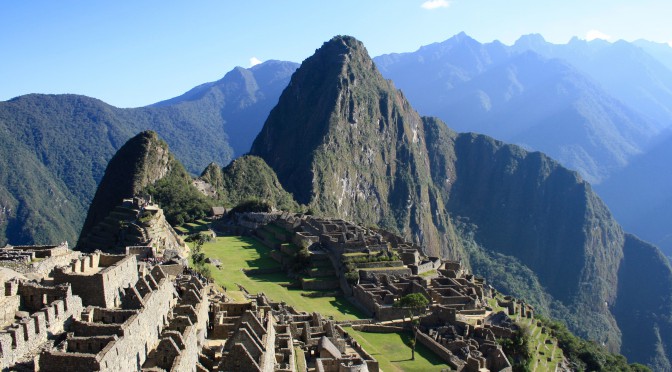Find out the very best ways to prevent altitude sickness in Peru
When you think of Cusco and Machu Picchu chances are you get swept up in a daydream of lush rainforests, ancient ruins and stunning landscapes. And you aren’t wrong! This beautiful area of Peru is one of South America’s hottest tourist destinations, and for good reason. Sadly, many don’t get to experience all it has to offer due to difficulty adjusting to the high elevation. Here Peru expert Nicola Connolly from www.bestofperutravel.com outlines the best ways to prevent altitude sickness to ensure you have an amazing Peruvian adventure.
What is altitude sickness?
Altitude sickness, a condition caused by lack of oxygen in high altitudes, can affect anyone travelling to Cusco, Peru (11,150 feet). No one is safe from this illness – it is not uncommon to see fit young people bowled over from ascending too quickly. Symptoms include headaches, nausea, vomiting, fatigue, a poor appetite, dizziness and the inability to sleep. These usually show up between 12 and 24 hours after reaching Cusco.
Relax when you arrive
It’s important to acclimatise in stages to give your body time to adjust to its new environment. Head to the beautiful Sacred Valley (9500 feet) first and be wowed by the breath-taking Inca sites, isolated weaving villages and vibrant markets. You may be excited to reach the summit and see the sights but remember, your health comes first. Spend your initial days in Cusco relaxing and soaking up the unique culture. Strenuous activity can exasperate symptoms and cause you to be become ill.
‘Climb high, sleep low’
Even the most experienced of trekkers follow the ‘climb high, sleep low’ mantra. If you’re eager to progress quickly and cover more than 1,000 feet in a day, make sure that you sleep at a lower altitude. Your body will thank you for it!
Stay hydrated
Low humidity at a high altitude makes the air dry so it’s more important than ever to keep your body hydrated. Drink lots of water before you arrive to prepare yourself for what’s to come and even more when you’re in Cusco. Avoid caffeinated drinks and alcohol as these cause dehydration and subsequent headaches and nausea. You really don’t want to throw a hangover into the mix!
Have coca leaves
Peruvians swear by coca tea as an antidote to thin air. This natural remedy is readily available in hotel receptions and offers almost immediate relief to dizziness for many. Have iced tea with the leaves to take with you on day trips or, if you feel like getting into the spirit of things, chew them like a local.
Buy portable oxygen cans
A few puffs of oxygen can work wonders. Portable oxygen cans only cost about €13 each and easily fit in your backpack. Having one on hand if you’re feeling dizzy or have a headache is advisable.
Don’t worry
Cusco is a massive tourist destination and the locals are well used to dealing with altitude sick tourists. If you do fall ill, rest assured that the medical facilities are top-class and you will be well looked after. For your peace of mind, all hotels have tanks of oxygen and many 5* resorts even pump oxygen into bedrooms to help you to sleep.
There’s no need to let your fear of altitude sickness put you off experiencing one of the world’s most incredible sites. Even with crowds of tourists, Machu Picchu retains its sense of mystery and magnificence, making it well worth the effort. Follow these top tips to reduce your risk of altitude sickness and have the trip of a lifetime.
—
Those travelling to Peru are strongly advised to book an appointment at a TMB clinic and speak with a qualified professional about the different vaccinations they may require. All travellers must get tetanus, hepatitis A and typhoid vaccinations, while those who plan on trekking also need hepatitis B and rabies vaccinations.
For more information about Peru and some expert travel tips please visit www.bestofperutravel.com.

